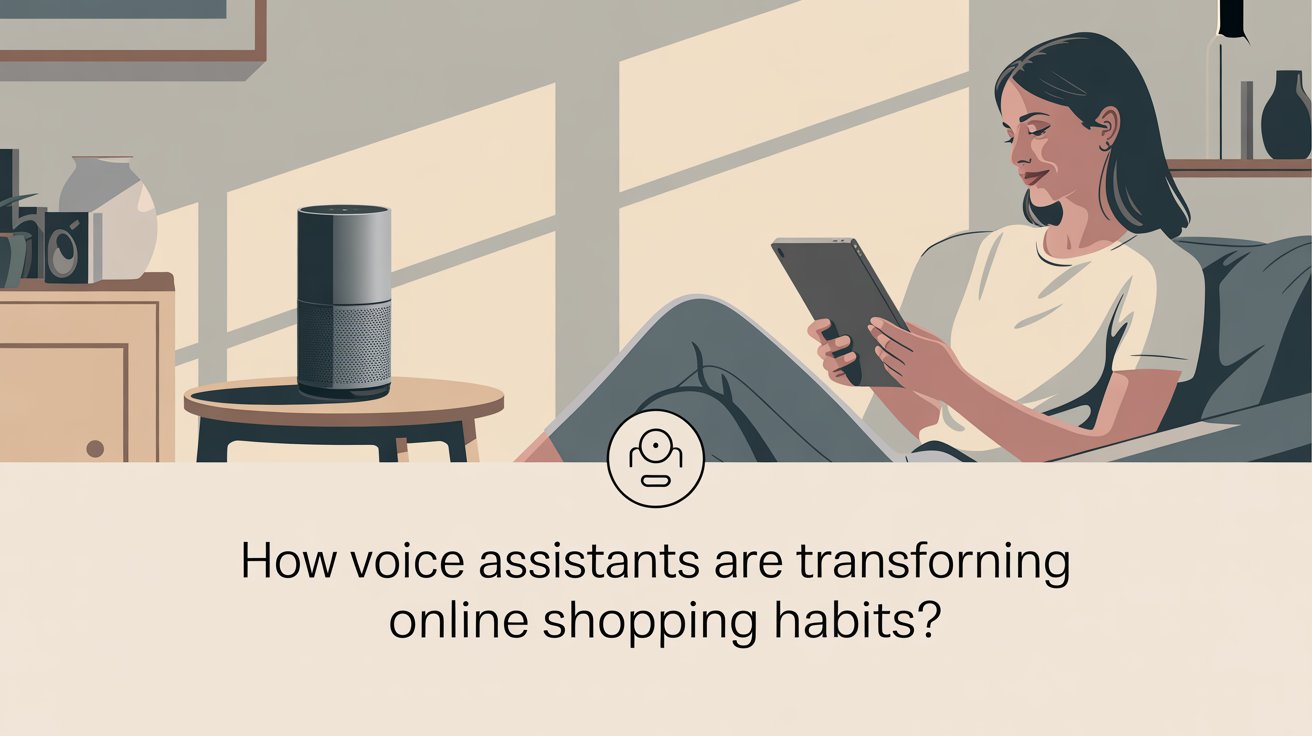How Voice Commerce Is Changing the Way We Shop: Faster, Easier, More Human

Imagine you’re in the middle of cooking, hands messy with dough, and realize you’re out of dish soap. Instead of fumbling with your phone, you just say, “Alexa, reorder dish soap.” And just like that, it’s on its way.
This isn’t science fiction anymore—it’s voice commerce, a rising trend that’s reshaping how we shop. From being a novelty, voice-based shopping is now becoming a seamless, everyday experience.
“The best technology is the kind that disappears into everyday life.”
— Mark Weiser, Father of Ubiquitous Computing
From Alarms to Add-to-Cart
When voice assistants like Alexa, Google Assistant, and Siri first entered homes, most people used them for simple tasks: setting alarms or playing music. Few trusted them to handle shopping. In fact, in 2018, only around 2% of Alexa users used it for purchases.
But fast-forward to 2025, and things have changed dramatically. According to eMarketer, nearly half of all U.S. internet users now engage with voice assistants. Globally, over 8 billion voice-enabled devices are in circulation. This explosion in adoption is being fueled by two things: better technology and changing user behavior.
Voice assistants today are smarter, faster, and far more accurate. More importantly, we’re all multitasking more—juggling work, chores, and errands. Voice-based shopping lets us act instantly, without stopping what we’re doing.
What Are People Buying with Voice?
The most common purchases via voice are repeat buys: groceries, personal care, and household items. Think shampoo, milk, detergent—products you’ve bought before and don’t need to see again.
Retailers have noticed. Amazon offers exclusive “Alexa-only” deals during sales events. Walmart integrates with Google Assistant, allowing users to add items to their cart by simply speaking.
A Real Example from India: Bigbasket & Voice Integration
India is also riding the wave. Blinkit, a major online grocery delivery platform, has integrated with voice assistants to let users place repeat orders via Alexa in Regional languages. A user can say, “Alexa, talk to Blinkit” and reorder staples like rice or atta. For India’s multilingual and mobile-first audience, this voice-first approach enhances accessibility, especially for those less comfortable with text input.
Gen Z Leads, But Inclusion Is Key
Gen Z, raised on voice tech, are the heaviest users. A 2024 PYMNTS study shows nearly 30% of Gen Z consumers shop via voice at least once a week. They use it to compare prices, read reviews, and complete purchases—all by speaking.
In India, voice commerce is also creating new access for non-English speakers. Assistants that understand Hindi, Tamil, and Bengali are enabling voice-based shopping for first-time internet users, especially in Tier 2 and Tier 3 cities. It’s not just about convenience—it’s about inclusion.
Beyond Homes: Voice in Cars and Restaurants
Voice commerce isn’t limited to home devices anymore. Quick-service restaurants are testing voice-activated drive-thrus. In vehicles, drivers can now order coffee or locate the nearest petrol pump without looking away from the road. Voice commerce is expanding into every moment where hands-free convenience matters.
Trust and Privacy: Still a Work in Progress
Of course, not everyone is on board. Concerns around privacy and unauthorized purchases remain. No one wants their child accidentally ordering chocolates through Alexa. To address this, platforms now offer voice recognition, PIN confirmations, and deletion of voice history.
What’s Next?
We’re now entering the next phase of voice commerce: conversation-driven shopping powered by AI. Soon, your assistant won’t just place orders—it will help you discover products. For example:
“Find me running shoes under ₹5,000.”
“Any brand preference?”
“Nike, please.”
“Here are your top three options.”
This kind of natural dialogue is what companies like Amazon, Flipkart, and Google are actively building with generative AI.
Conclusion: Voice as the Default for Everyday Shopping
Voice commerce is unlikely to replace all forms of shopping. But for the everyday, repeat, and time-sensitive purchases—it’s fast becoming the preferred method. You don’t need to pause. You don’t need a screen. You just speak.
And that’s what makes it powerful. It blends into life. Effortless. Instant. Inclusive.
In a world where convenience is currency, voice commerce is quickly becoming the new normal.
Source
Voice Commerce: How Smart Speakers are Changing the Way Consumers Shop Online – https://www.medianews4u.com/
